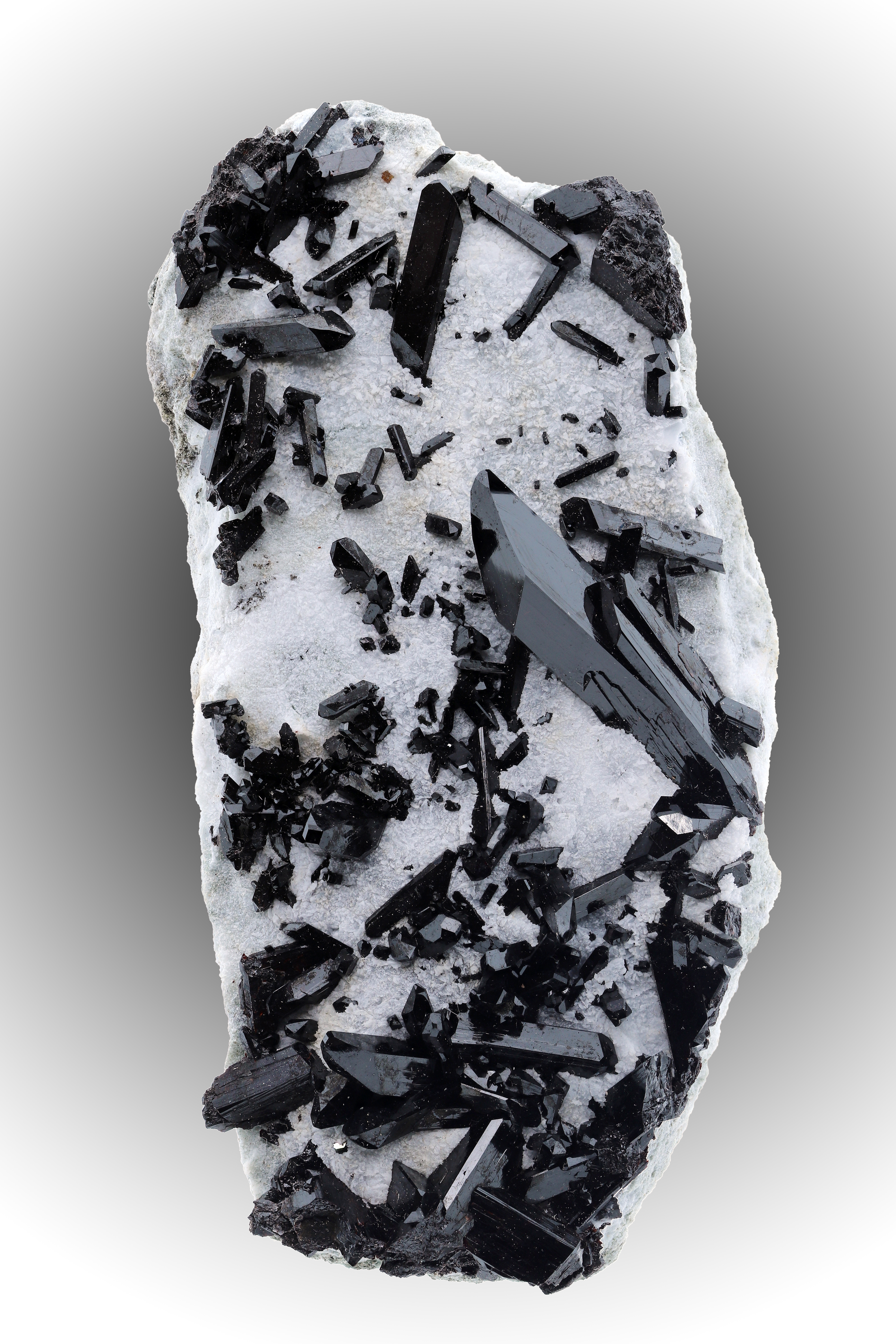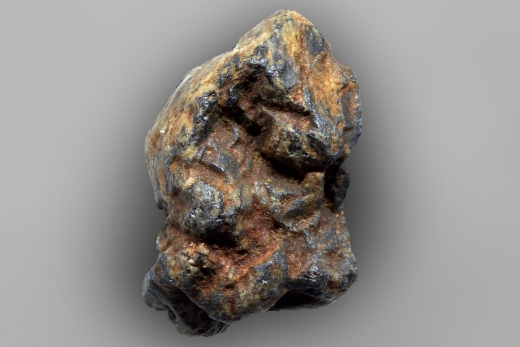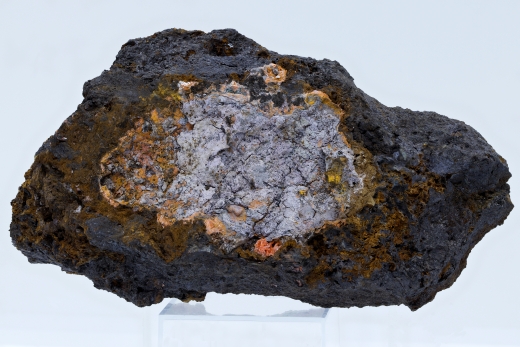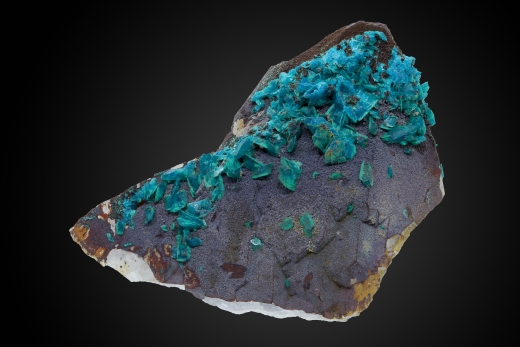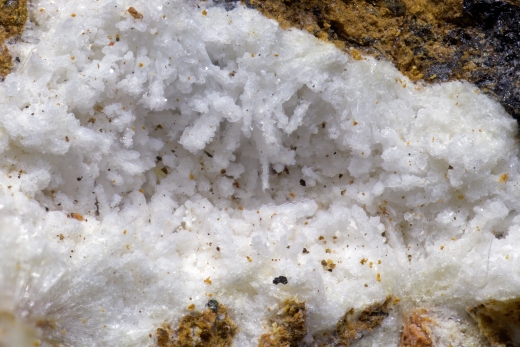Na2KLiFe2+2Ti2Si8O24
Neptunite is a silicate mineral named for Neptune, the Roman god of the sea. It was first described in 1893 for an occurrence at the type locality for the species – Narssârssuk pegmatite, Narsaarsuk Plateau, Igaliku, Kujalleq, Greenland.
There are three other members of the Neptunite group:
- Magnesioneptunite – a relatively new mineral (IMA Approval 2009) which is the magnesium (Mg) dominant analogue of neptunite
- Manganneptunite – manganese (Mn) dominant
- Watatsumiite – named after Watatsumi, a Japanese sea god and which has vanadium replacing the titanium in the chemical formula
MinDat.org lists approximately 40 localities for Neptunite including one location in Australia, which is the Woodsreef Mine, Barraba, New South Wales, Australia.
A locality well known to collectors for its Neptunite specimens is the now closed California State Gem Mine, Santa Rita Peak, San Benito Co., California, USA. This deposit consists of veins of natrolite cutting a glaucophane schist inclusion in serpentinite. Most of the specimens from here are said to have been prepared by using hydrochloric acid to dissolve the enclosing natrolite.
Prismatic lustrous black crystals of neptunite to 24mm, contrasted by a massive white natrolite matrix. There is also a single brown micro crystal of Joaquinite-(Ce) (Type Locality) in the top centre of the specimen – California State Gem Mine, Santa Rita Peak, San Benito Co., California, USA. [70x35x20mm]
